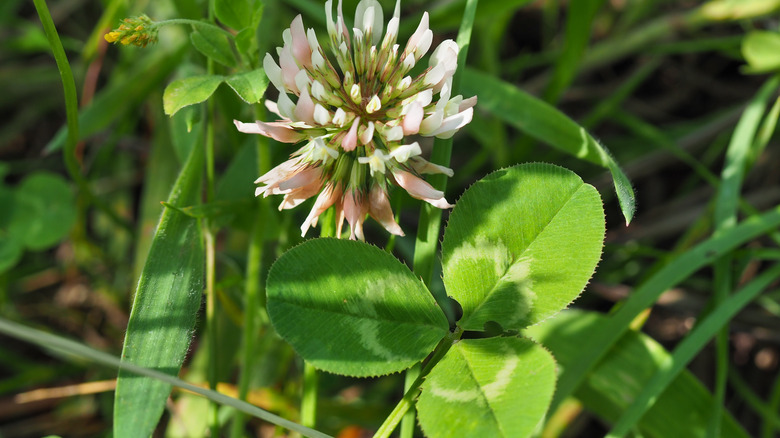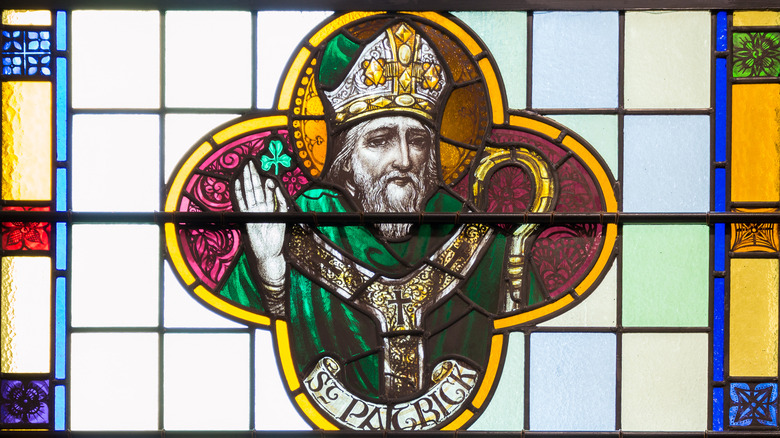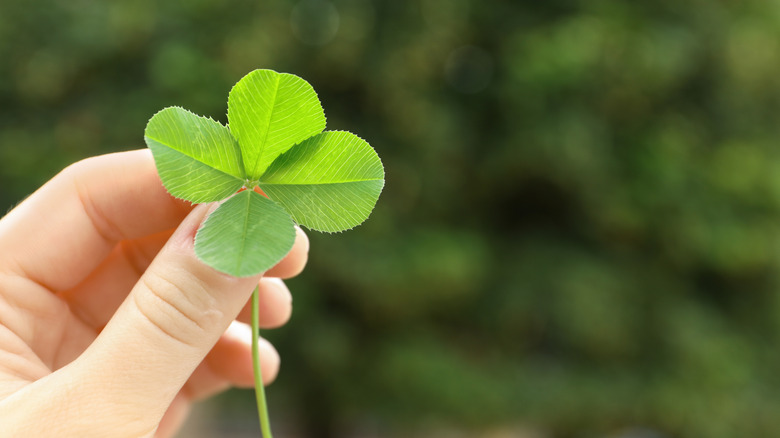What's The Difference? Irish Shamrocks Vs. 4-Leaf Clovers
Shamrocks are three-leaf common plants that grow to about 4-inches high and are often scattered throughout the grass, whether in a lawn or meadow. The name "shamrock" comes from the Celtic word seamróg or seamir óg, meaning little clover, according to The Irish Times. The curious thing about shamrocks, though, is that when people refer to them, they could be referring to one of several plants, including red, white, or yellow clover, black medick, or wood sorrel, also called oxalis.
As Irish Genealogy Toolkit points out, there's a lot of confusion about shamrocks, so much so that people can't quite decide which plant it is. Smithsonian Magazine refers to an informal experiment conducted in 1988 by a horticultural taxonomist for Ireland's National Botanic Gardens named E. Charles Nelson. He asked people across the country to send him samples of the plant they called a shamrock. He received over 240 samples, most of which were white clover (Trifolium repens), but he also received sorrel (Oxalis acetosella) and medick (Medicago lupina). Nelson wrote, "there is no single, uniquely Irish species that can be equated with shamrock."
Part of Irish tradition
The clover that people use to represent shamrocks grows prolifically not only in Ireland but in central Europe and Asia, as well as throughout much of the US and Canada, where it's considered an invasive weed. Probably the best-known story about the humble shamrock is that St. Patrick, the Patron Saint of Ireland, used the plant's three leaves to describe the Holy Trinity to nonbelievers while converting pagans to Catholicism. But Irish Central points out that the trouble with this story is that it's just that -– a story. The incident was invented in the 18th century as Ireland was gathering political strength and finding pride in things unique to the country.
So the shamrock is more of a cultural reference — like roses representing England, leeks for Wales, and the thistle for Scotland. Three-leafed shamrocks or clovers appear in art, on buildings, on decorative household items, jewelry, books, and more, and as a symbol, representing Irish culture as well as political movements over the past centuries, according to the UK's Parliament records. Today the shamrock, that is, the three-leaf clover that's called a shamrock decorates everything from beer glasses to greeting cards.
A rare shamrock
So what's the difference between a shamrock and a four-leaf clover? One leaf. No matter which plant is called upon to represent shamrocks, clover, wood sorrel, or medick, all have three leaves. The reason a clover plant develops a fourth leaf is because of genetic mutation. Wired indicates that while scientists are studying clover, they haven't yet found the root cause of why the plant grows a fourth leaf, although some say environment and stress are probable factors.
So why are four-leaf clovers considered lucky? Well, first, you're lucky if you find one. Garden Collage estimates that one in 10,000 normal clover plants produces a four-leaf version. Traditions reaching back to the Celts and Druids say carrying a four-leaf clover would ward off evil spirits. Good Luck Symbols points to a belief from the Middle Ages that people who carried a four-leaf clover could see fairies and identify witches. Also, traditionally, the three leaves of the normal clover represent faith, hope, and love, and the fourth leaf signifies luck or success.


